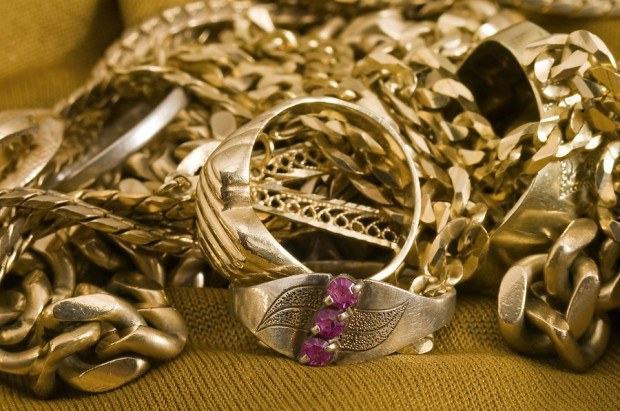With losses from Hurricane Ida and its aftermath reaching $25-$30 billion, far too many homeowners don’t realize they may not have insurance coverage for flooding. While tens of thousands of flood insurance claims have already been filed, property owners are too often surprised to learn their homeowners policy doesn’t cover flood damage —and that they have to purchase additional, special coverage for flood damage.
The same could be said for often ignored but important fine jewelry insurance coverage.
With natural disasters occurring more often due to climate change, consumer awareness of property and flood insurance (or lack of) has become more top of mind, along with increasing costs. In the case of jewelry insurance, consumers may be relying less on their homeowners policies for coverage while at the same time digital technologies are making it much easier to secure specialized jewelry and watch insurance at affordable prices.
Combine this trend with MasterCard SpendingPulse projecting jewelry sales to grow 59 percent year-over-year in Q4 2021, and 53 percent growth compared with the 2019 holiday season (pre-pandemic), and jewelry insurance represents a unique growth opportunity for carriers to explore at a time when competition continues to escalate.
The Details
A recent online survey conducted by Qualtrics among 1,250 American consumers found that 6 out of 10 had not insured some of their most prized possessions: their jewelry. Commissioned by ValuePenguin.com, the research revealed almost two-thirds of people don’t have insurance for their engagement rings and other valuables. When examining jewelry valued in the $5,000 to $10,000 range (the typical cost of an engagement ring), the survey said 29 percent still don’t have any insurance coverage.
The Qualtrics research indicated that while 62 percent did not insure their jewelry, 30 percent of respondents relied on insuring jewelry through their homeowners policies. Only 9 percent insured their jewelry with a separate policy.
Our own analysis at BriteCo, a new jewelry InsurTech company, estimates up to half of all engagement ring purchases every year go uninsured. This lack of coverage for high-value items is a significant risk for many younger adults since buying an engagement ring is one of their major purchases after a home mortgage or auto purchase.
According to the 2021 WeddingWire Newlywed Report, the average spent on an engagement ring is $5,500. While the study indicated about half of couples will spend under $5,000 on their engagement ring—nearly 1 in 5 or 18 percent spend more than $10,000!
Why don’t people make buying jewelry insurance a priority? Or more to point, when they do, why are they relying on their homeowners policies to insure their valuables when they may not cover full replacement value?
Lack of Awareness, Education
Like flood insurance, too many people assume their homeowners policy will fully cover their fine jewelry possessions in the event of loss, theft or damage. Only when a loss occurs and they file a claim do they discover there is a cap on jewelry claims (personal possessions) that typically ranges from $1,000 to $2,000. And even with a separate schedule or floater, jewelry items are often subject to relatively high deductibles.
Even more concerning for U.S. residents, homeowners insurance rates have dramatically increased (along with higher deductibles to help make them more affordable) in the wake of climate change. As of 2020, ValuePenguin analysts estimate that the average cost of home insurance is $1,445 —a total increase of 59 percent over the last decade. As climate disasters continue to escalate, we can expect higher premiums and higher deductibles as both insurance companies and consumers try to control costs.
Digital Technology Paves the Way
With less than 10 percent of Americans opting for a separate jewelry insurance policy, it may be safe to assume that most are not aware of their options to buy specialized jewelry insurance. Nor do they have any idea how much jewelry insurance should cost. This is not necessarily surprising since higher-value jewelry purchases typically happen around special occasions and are not a regular buying experience.
However, the wave of digital transformation experienced in the insurance industry led by InsurTech innovators specializing in jewelry coverage is changing the way consumers can and should insure their fine jewelry and watches.
Rather than leaving themselves exposed to major loss from a misplaced, stolen or missing piece of fine jewelry—or a substantial out-of-pocket cost to replace it—consumers can now purchase jewelry insurance directly online and be covered for a full replacement within a matter of minutes. These specialized replacement-only jewelry insurance policies are surprisingly affordable, ranging from 1 to 2 percent of appraised value (or even less in some locations) including no deductibles. Claims too are efficiently managed online and quickly resolved in working with a local jeweler of choice.
While a jewelry appraisal is still required by most jewelry insurers in filing a claim, even that process has been brought into the digital age with cloud-based appraisal software. This allows jewelers to produce an accurate professional appraisal in a fraction of the time compared with traditional methods based on hundreds of thousands of data price points managed through algorithms that help assure accurate values.





















 Aon Adds to List of Brokers Suing Howden US for Alleged Poaching, Theft
Aon Adds to List of Brokers Suing Howden US for Alleged Poaching, Theft  What to Expect in 2026: U.S. P/C Results More Like 2024
What to Expect in 2026: U.S. P/C Results More Like 2024  Why Insurance Telematics Integrations Fail
Why Insurance Telematics Integrations Fail  Unpacking a Consumer Intervenor’s Novel Idea
Unpacking a Consumer Intervenor’s Novel Idea 





